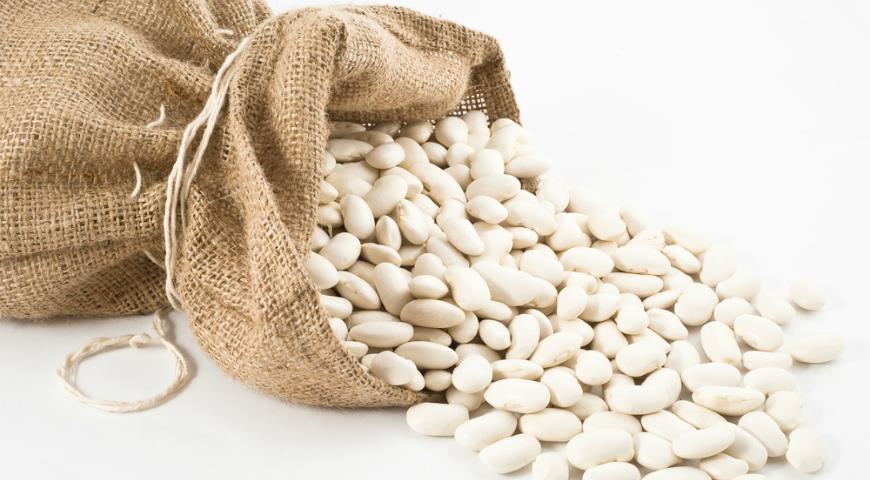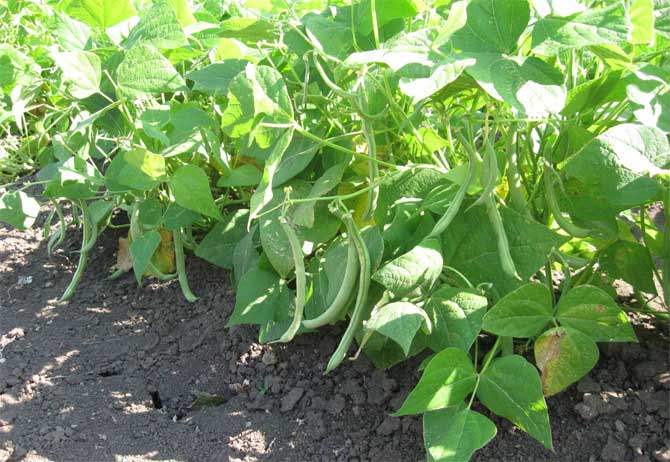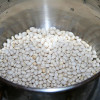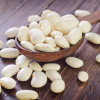White beans: description and cultivation
Content
Description
Beans are known for their nutritional properties. Everyone knows that it has a higher protein content than meat. And its quality is not inferior to the protein of a chicken egg. The calorie content of the same grains is 3 times higher than that of meat. This legume is also useful for those who have liver and gall bladder problems. It strengthens the immune system of every person.
Let's talk about a specific species. These are white beans of a peeling type, green large (up to 9 cm in size) flat cylindrical blades of which are eaten unripe. The pod length is 9 - 11 cm. It is curved. The mass of each bean is from 5.1 to 5.5 grams. The beans contain about 8, 5 - 10% of dry matter, 1, 7 - 2% of sugars, 18 - 21 mg of vitamin C. The beans are covered with a thin layer of parchment on top. In technical ripeness, they have a characteristic light green color. The bushes of the culture reach 30 - 35 cm in height, during the flowering period they are covered with white flowers.
The period from the emergence of shoots to the beginning of collection of the scapula is 55 - 65 days. The plant is bushy, spreading, has an average number of branches. The peculiarities of the variety of this not small white beans are excellent taste and marketability, a high degree of productivity, and stable immunity. The normal yield is 1.5 kg per square meter for the entire growing season. These white beans grow equally well in Russia, Ukraine, and Moldova. Its delicious beans can be used for food both after cooking and for preservation for the winter.
Video "Benefits and Harms"
From the video you will learn what are the benefits and harms of beans.
Growing
The period from germination to technical maturity of the variety varies from 55 to 65 days. Beans are a thermophilic crop. Its sowing should be carried out in open ground, doing this in late May - early June. That is, after waiting for the spring frosts to pass. A standard sowing pattern is used - 40 by 10 cm. Before sowing, the seeds should be soaked in water and wait for swelling. It is best to sow this type of crop in a well-heated and loose soil with neutral acidity. In this case, the degree of soil moisture should be 75 - 80%. Distinguish between self-pollination and cross-pollination. Seeds are planted to a depth of no more than 2 - 3 cm. The recommended planting rate per hectare is 80 - 125 kg. Density - from 30 to 35 pieces per square meter.
The harvest time is in July - August. You can use the seedling cultivation method. For this, the seeds are sown in pots or other small containers at the very beginning of May. Landing in open ground is carried out in early June.
Care
Proper care of plants of this variety implies timely sufficient watering, regular weeding, and loosening. And it is also necessary to apply special mineral fertilizers to the soil. It is permissible to feed with humus. But it is strictly forbidden to do this with fresh manure.
Harvesting is advised to be carried out every few days.Because with long breaks, a thin parchment layer forms on the surface of the scapula.
And then the beans will become tough after cooking. If desired, beans of this type can be grown for grain. At the end of the season, the stems are best buried in the ground. This will enrich the green mass of legumes with useful nitrogen.
Diseases and pests
As practice shows and the manufacturer claims, these excellent white beans have excellent protection against most of the known viruses and pests. In particular, she has a strong immunity to such unpleasant diseases of legumes as bacteriosis and anthracnose.
Video "Growing"
From the video you will learn how to grow beans.



